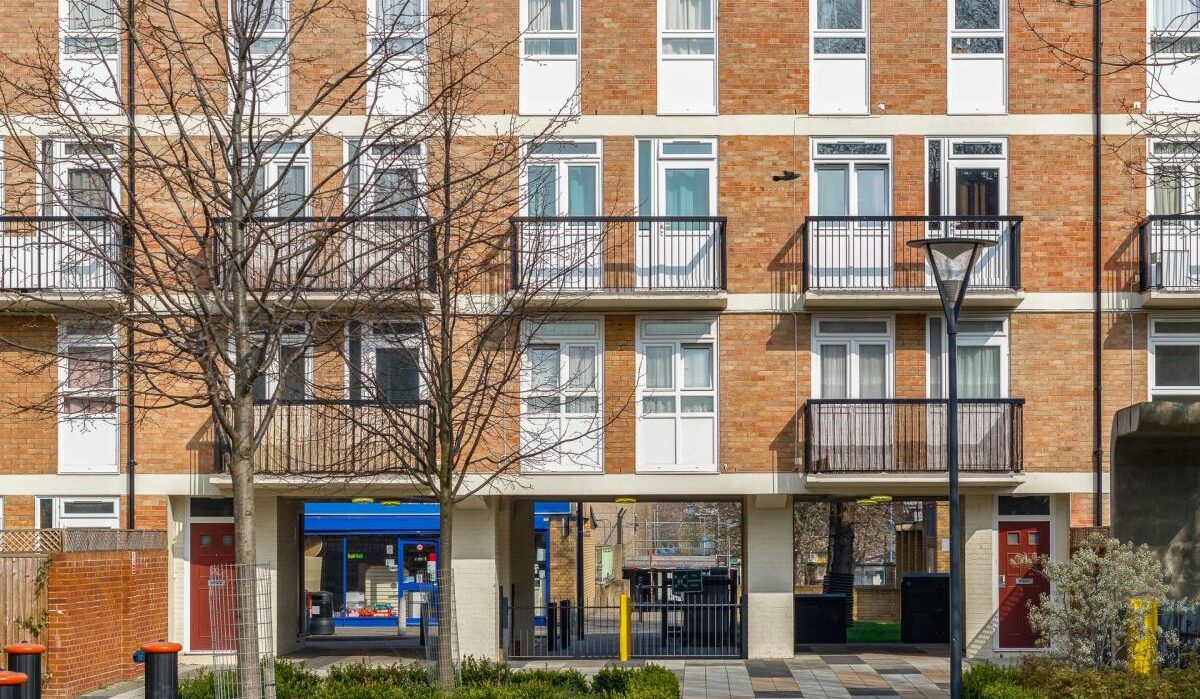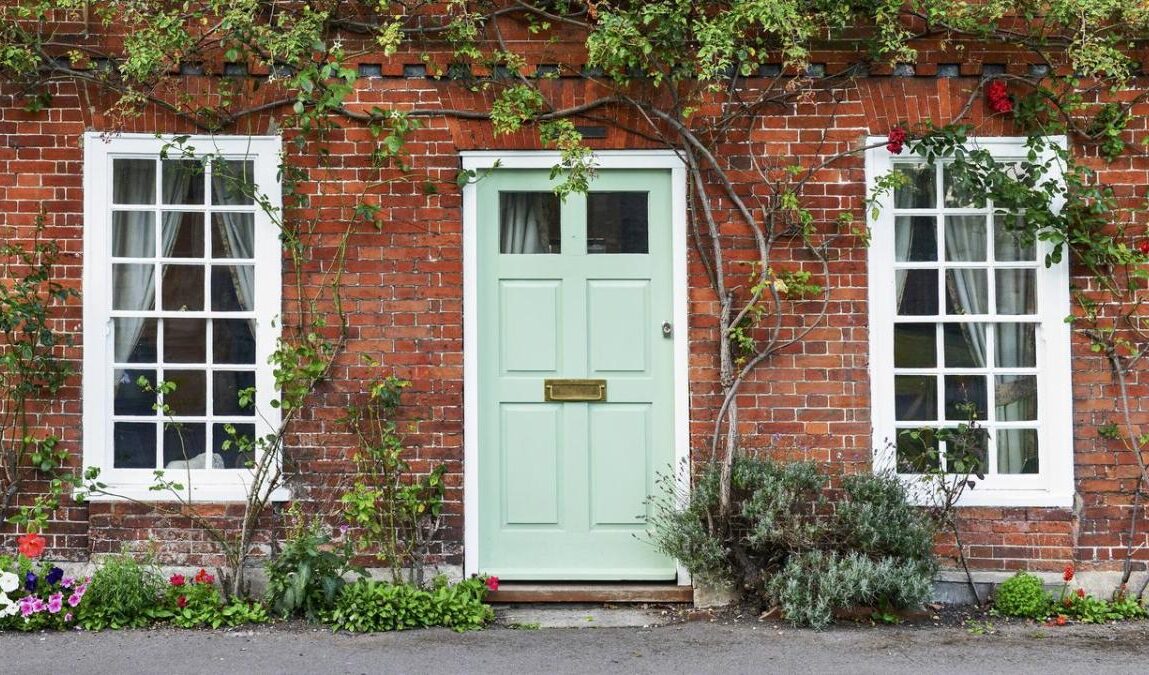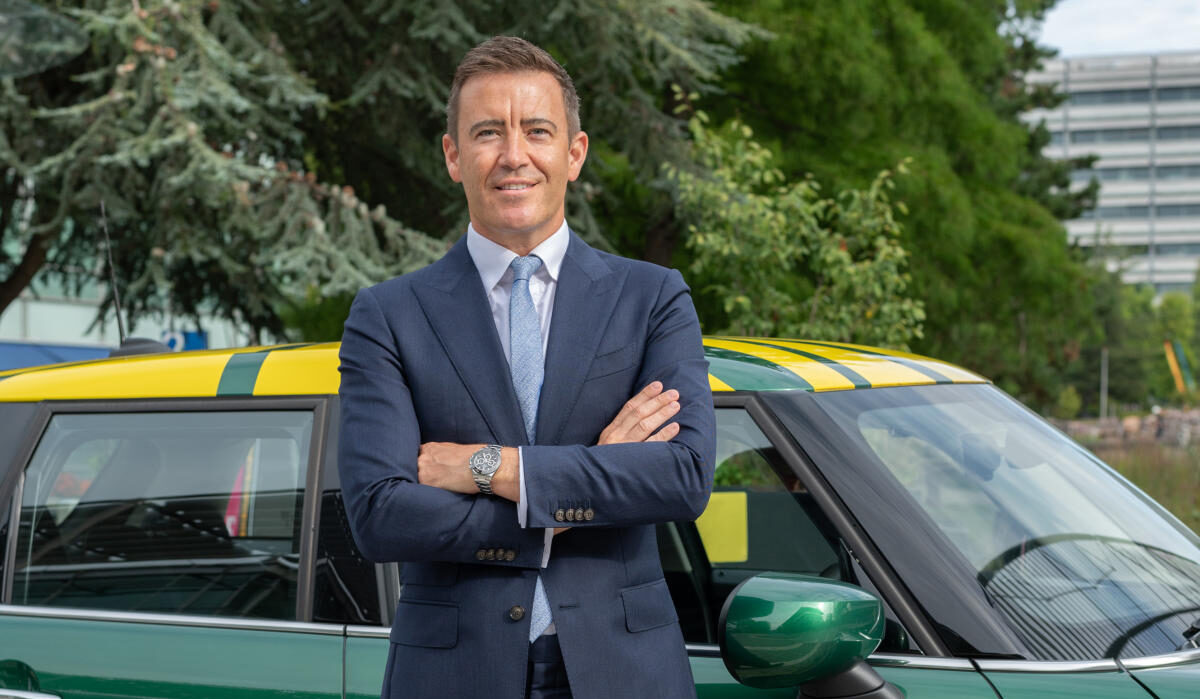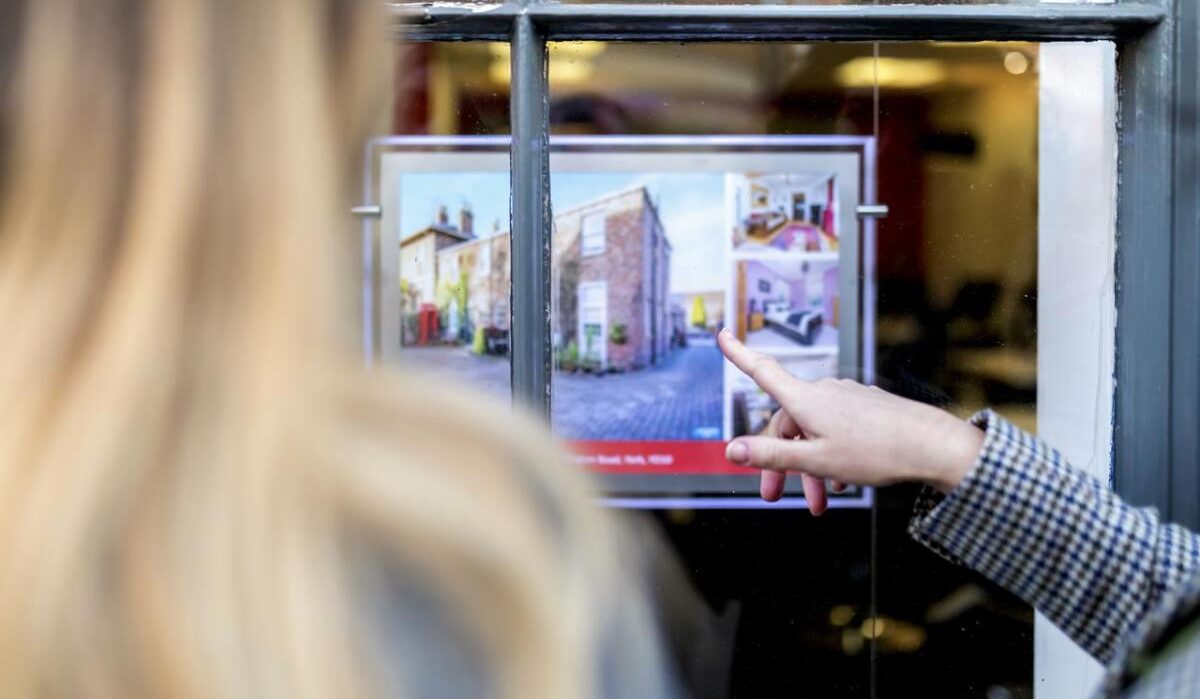How does the Spring Budget affect household budgets?
Inflation has peaked and is set to fall to 2.9% by the end of 2023, said Chancellor Jeremy Hunt in his Spring Budget, as he unveiled plans for help with fuel bills, childcare costs and pensions.
“The UK will not enter a technical recession this year,” said Chancellor Jeremy Hunt in his Spring Budget statement.
The UK economy is set to contract by 0.2% in 2023, before heading into a growth rate of 1.8% in 2024.
The unemployment rate is also expected to be less severe this year, with unemployment rising by less than 1% to 4.4%.
And in welcome news, inflation has peaked, with the Office for Budget Responsibility reporting that it will fall back to 2.9% by the end of 2023.
So how does the Spring Budget affect household budgets?
Free childcare for all under 5s
Acknowledging that the UK has one of the most expensive childcare systems in the world, Hunt pledged free childcare for all under 5s.
‘Nearly half of non-working mothers say they’d prefer to work if there was suitable childcare', said Hunt.
'But for many a career break becomes a career end.’
In eligible households where all adults are working at least 16 hours a week, 30 hours of free childcare will be provided for children aged 9 months or over, starting when maternity or paternity leave ends.
The plan is set to be introduced in stages:
-
From April 2024, working parents of 2-year-olds will receive 15 hours of free childcare
-
From September 2024, this will be expanded to all children aged 9 months or over
-
From September 2025, every parent will have access to 30 hours of free childcare a week
How will it happen?
-
Childminders are to be offered incentive payments of £600 for signing up to the profession, rising to £1,200 for those who sign up through an agency
-
Nurseries will also be given more flexibility in how they operate, with minimum child to staff ratios raised from 1 to 4 to 1 to 5 - as is currently the case in Scotland
-
Parents on Universal Credit who want to move into work or increase their hours will have their childcare costs paid upfront by the government, with £951 allocated for one child and £1,630 allocated for two
By September 2026, the government plans for all schools to offer wraparound care from 8am to 6pm.
Energy price guarantee to remain for a further 3 months
The energy price guarantee will remain at £2.5K for the next 3 months, ahead of an expected fall in energy prices in July, saving the average family £160.
And for the 4m households on pre-payment meters, charges will be brought inline with comparable direct debit charges.
“The energy premium paid by our poorest households is coming to an end.,” said Hunt.
Hunt also said the UK needs to focus on ‘domestic sources of energy that fall outside Putin or any autocrat’s control.'
He added: ‘Electricity generated by renewables has increased from 10% to 40% but we need another critical source of cheap and reliable energy - and that is nuclear.
‘It’s vital to meet our Net Zero obligations.’
So nuclear energy will now be classed as environmentally sustainable, giving it access to the same investment incentives as renewable energy.
Fuel duty frozen
The planned 11p rise in fuel duty will be postponed as ‘now is not the right time to up-rate fuel duty inline with inflation’.
So for a further 12 months the government will maintain the 5p cut and freeze fuel duty.
Employment
There are currently 1m vacancies in the economy and 7m adults of working age who are not in work.
Hunt said the government wants to remove the barriers that stop people who want to from working.
In a reform of disability benefits, Hunt said the government plans to abolish the work capability assessment, so that claimants can keep their benefits and still work.
He also announced plans for those aged over 50, ‘experienced workers’, to encourage the 3.5m people who are of pre retirement age but who are not currently part of the labour force back to work.
Pensions
The pensions annual tax-free allowance is set to be increased by 50% from £40K to £60K, while the lifetime allowance will be abolished.
The government believes this reform will stop over 80% of NHS doctors from receiving a tax charge.
Is a regeneration project planned near you?
Hailing Canary Wharf and Liverpool Docks as ‘2 outstanding regeneration projects that transformed the lives of thousands of people’, Hunt announced a further 12 new investment zones for:
-
West Midlands
-
Greater Manchester
-
Liverpool City
-
North East
-
South Yorkshire
-
Tees Valley
-
West Yorkshire,
With 4 planned for
-
Scotland
-
Wales
-
Northern Ireland
Transport
A further 8.8bn us set to be invested in sustainable transport, while the government increased the ‘pothole pot’ by £200m to £700m, with £320m allocated to Scotland, £180m for Wales and £130m for Northern Ireland.
And finally, 'the Brexit pubs guarantee'
For ‘the great British pub’ Hunt increased draught relief, meaning the duty on alcohol will be up to 11 pence lower than that sold in supermarkets.
‘British ale is warm but the duty on a pint is frozen,’ he said.
Key takeaways
- 30 hours of free childcare a week from September 2025
- Energy Price Guarantee extended for 3 months
- Fuel duty frozen for 12 months
- Pensions: annual tax-free allowance increased by 50% from £40K to £60K and the lifetime allowance to be abolished
Buy-to-let mortgage choice recovers
The number of different deals available to people renting out a property reaches its highest level since before the mini-Budget.
The number of buy-to-let mortgages available has reached its highest level since before the mini-Budget as the market continues to recover.
A total of 2,400 different deals are available to people buying a property to rent out, a level last seen in July 2022, according to financial information group Moneyfacts.co.uk.
The average interest rate charged on fixed rate buy-to-let mortgages has also continued to fall.
The typical cost of a two-year fixed rate deal is now 5.81%, while interest on a five-year one has dropped to 5.72%.
Rachel Springall, finance expert at Moneyfacts.co.uk, said: “It is encouraging to see buy-to-let product choice gradually recover from the shock surrounding the fiscal announcement.”
Why is this happening?
The choice of buy-to-let mortgages for landlords fell sharply in the wake of the mini-Budget as lenders pulled their deals to reprice them.
This was because former Chancellor Kwasi Kwarteng’s announcement led to a steep increase in government borrowing costs, which in turn impacted the rates lenders pay to borrow money for fixed rate mortgages.
The average cost of the deals that were available also shot up to more than 6%.
But Chancellor Jeremy Hunt reversed most of the mini-Budget measures, helping to restore confidence and reduce government borrowing rates.
As a result, lenders have gradually relaunched their mortgage ranges and reduced the interest rates they charge, despite the Bank of England’s Bank Rate actually increasing during the same period.
What should I do if I need to remortgage?
Unfortunately, despite the fall in interest rates, if you are coming off a two-year or five-year fixed rate deal you are still likely to face a significant increase in your monthly repayments.
For someone borrowing 60% of their property’s value, the average two-year fixed rate mortgage was 2.14% in March 2021, compared with 5.39% now, the equivalent of £542 a month more on a £200,000 interest-only mortgage.
The difference is slightly less for five-year deals, with these rising from an average of 2.74% in March 2018 to 5.22% now, which would increase monthly payments by £413 on a £200,000 interest-only loan.
But these are only average rates, and there are better deals available if you shop around.
Springall said: “The drop in average buy-to-let rates appear more subdued than seen within the residential mortgage sector, but lenders have made moves to entice new business.”
What’s the background?
Higher interest rates not only make a mortgage more expensive to service, they also make it more challenging to pass lenders’ affordability tests.
Lenders use a different affordability test for buy-to-let mortgages compared with mortgages for your main home, known as the Interest Cover Ratio.
Under this test, the rent you receive from the property must be the equivalent of between 125% and 145% of your monthly mortgage interest payment.
If your rent isn’t high enough to meet this affordability test, some lenders will allow you to do something called ‘top slicing’, under which they include some of your income in their affordability calculations.
That said, average rents have also risen at their highest rate for a decade, according to our latest Zoopla Rental Index.
The typical cost of renting a home increased by 11.5% in 2022 to stand at £1,118, with London seeing a 16.1% increase, while in Scotland rents rose by 12.5%.
Key takeaways
- A total of 2,400 different deals are available to people buying a property to rent out
- The typical cost of a two-year fixed rate deal is now 5.81%, while interest on a five-year one has dropped to 5.72%
- However in March 2021, the average two-year fixed rate mortgage was 2.14%, while in March 2018, the average five-year fixed rate mortgage was 2.74%
How much should I reduce my asking price to achieve a sale?
Reductions in asking prices to align with price-sensitive buyers are a common occurrence right now but don't reduce yours by too much too soon....
Reductions in asking prices to align with price sensitive buyers are a common occurrence right now.
Individual property reductions will vary according to each property type, so be sure to ask advice from your agent.
But don’t reduce your asking price by too much too soon, as demand picks up around Easter and the value you get from your home will unlock your next move.
Prices are adjusting across the market, so if you’re selling, it’s heartening to know that the home you want to buy is likely to be reduced in price too.
Asking price reductions - a means to achieve a sale
Cost-of-living pressures and increasing mortgage rates have caused buyer demand to decline in recent months.
The buying power of the average home buyer shrank by a fifth in 2022. Anyone serious about selling their home this year needs to take this shift in buyer circumstances into account and be realistic about how they price their property.
Right now, 4 in 10 properties listed on Zoopla have undergone price reductions of at least 1% and sellers are increasingly working with agents to adjust their prices and attract buyers.
Asking price reductions in February
How much sellers are willing to cut their asking prices by depends on personal circumstances and their local housing market.
The price achieved will ultimately dictate what the seller can buy next.
Last month, over a quarter of sellers opted for larger adjustments, reducing asking prices by 5% or more. This shows us that motivated sellers are open to more serious discounting.
These reductions will naturally equal different monetary values in different areas of the country.
Nationally, we see sellers are typically cutting asking prices by £10,000 to £15,000.
In London, where house prices are higher, sellers adjust their asking prices by £25,000 to £30,000 on average.
In more affordable parts of the country, such as the North East, adjustments between £5,000 and £10,000 are the most common.
Asking price reductions most common in southern England
We are seeing sellers across the country cutting their asking prices.
But we’re also seeing that asking price adjustments are most common in southern England. In London, almost half of properties currently listed on the market have had a price decrease, followed by 44% in the South East and 42% in the East of England.
Average property prices in these regions are much higher than elsewhere in the UK. That means that the impact of higher mortgage rates is bigger, hitting buyer demand harder.
This creates conditions where sellers need to act more decisively to achieve a sale.
Which property types are impacted?
Asking price adjustments are impacting flats to a greater extent than houses. One in 5 flats listed on Zoopla in February had an asking price reduction of at least 5%, while only one in 6 houses had a similar price change.
In recent years, demand for flats has been lagging behind demand for houses.
Apartment owners understand that pricing competitively is even more important for this property type if they want to achieve a sale.
This is becoming more important as buyers are becoming more price-sensitive.
Is reducing an asking price a bad thing?
Not necessarily. Asking price adjustments are happening across the board. As a downsizer or upsizer, this means that repricing will affect not only the property you are selling but quite possibly the one you may be looking to buy next.
A change in asking price can speed up the selling process.
Only 7% of listings that have undergone a price reduction this year have remained unsold by the end of February.
For a third of those properties, a modest adjustment of up to 5% was all they needed.
When adjusting asking prices, timing is important as well. Historical data shows buyer demand picks up around Easter.
Our advice for serious sellers looking to sell in March is to have an honest conversation with your agent to ensure your property is priced at the right level for the current market.
It is welcome to see evidence of greater realism from sellers on pricing. Many sellers will see that recent property value gains equip them with a buffer they can use to unlock sales.
This shows that sellers have got room for manoeuvre without a significant loss to equity that would have been built over many years.
Key takeaways
- Some 4 in 10 properties currently listed on Zoopla have their asking price reduced by at least 1%
- The most common reduction is between £10,000 to £15,000
- Those selling property in the more expensive regions of southern England are more likely to drop their asking price
- Asking price cuts are more common for flats than standard family-size houses
- Widespread reductions show greater realism from sellers on pricing, possibly thanks to the large capital gains made during the pandemic
Foxtons CEO Guy Gittins: my advice for sellers in 2023
As buyers return to market following last year’s mini budget shocker, what should sellers be doing to make sure their homes are the ones that are snapped up?
As we transition to a buyers’ market, we asked Foxtons Chief Executive Officer Guy Gittins to share his advice for sellers in 2023.
Is now a good time to sell your property?
It’s always a good time to sell a property, whether the market’s going up or down. It just depends on what your onward move is.
If you’re moving up to a larger property and the market’s come off by 5%, then it really is a great time to be able to make that move.
But for the couple living in that large family home, who might want to downsize to a smaller property, that becomes a little bit less attractive.
If you are planning on downsizing, is it a good idea to wait?
It is so much more important, if you can afford the move, to be in a property that's right for you and your family.
I’ve seen way too many people holding off a move because they’re trying to play the market and ultimately what happens is that they stay in a property that’s no longer suitable for them for too long.
The joy and benefit of being in the right property for you and your family, in my opinion, far outstrips any financial gain on a 5% trade if you’re trying to play the market.
Very often people will miss that moment anyway because nobody can call the top or bottom of the market, it’s very difficult.
And when you’ve stayed in a property for over 10 years, these small movements in prices year-to-year become totally irrelevant.
What are your top 3 tips for sellers right now?
1. It’s all about correct pricing. Take your agent’s best guidance on pricing, because they absolutely know the market and they’ve got the data on it.
2. Presentation is absolutely critical.
3. And plan your onward purchase. Because if you’re selling in order to buy, it’s very advisable to be doing both searches at the same time.
Once you go under offer, you don’t want to be holding that process up, particularly if you’re looking for a forever home.
And the last thing you want to be doing is trying to find that in a four week window, it just doesn’t work like that.
Are you seeing more of a typical profile of buyer at the moment? For example first-time buyers or downsizers?
Not at all, we’re seeing overseas buyers, first-time buyers, needs-based buyers, the spread of buyers has pretty much stayed the same as last year.
Are you seeing less demand from buyers at the moment?
As soon as we had the mini budget at the start of Q4 last year, buyer numbers dropped dramatically very quickly. In some instances by 50%, compared to what we were seeing before the mini budget.
But what’s been very interesting is that for the first couple of months of this year, those numbers have recovered considerably and we’re really seeing a large number of new buyers coming back into the market.
There’s a realisation that interest rates are not going to be 6% - 7%.
The swap rates between the banks - and therefore the actual interest rates that somebody would be paying - have come down considerably from the last couple of months of last year and that’s absolutely encouraging people.
What impact will mortgage rates have on the property market this year?
Bearing in mind how banks have had to be structured following the financial crisis, most mortgages over the last five years have been stress tested at 3% to 4%.
So when people are coming up to their next mortgage or their next move, that has already been factored into the market.
And while it might not be as comfortable and people might not have as much free cash, we’re not seeing forced sellers coming to the market, desperate to exit their property because they can’t afford their mortgage rates. That’s absolutely not happening.
And that’s because of the very sensible policies that were put in place following the global financial crisis.
We’re not seeing a crash in any way, shape or form.
What we are seeing is some of that really toppy part of the market, the froth from the first three-quarters of last year (which saw 5% gains from 2021), is now coming off of the market.
But we’re seeing a lot of activity, buyers are coming into the market this year, viewing numbers are high and we have a solid outlook for the rest of this year.
What's happening with asking prices at the moment?
We are seeing a higher volume of price adjustments in the marketplace.
But when a property’s been on the market for a while and it has that price adjustment, it’s stimulating a lot of interest.
It’s about being correctly priced against where the market is trading. That’s the key.
At Foxtons, because we’ve got access to so much data, we’re able to price very accurately, stimulate activity and get you the best price for your property.
That is the value that agents bring, having access to that vast amount of data, so that we advise clients accordingly.
What can sellers do to make their home the one buyers want?
With anything in life, it’s all about first impressions and they really do matter. So the presentation of your property as it appears to the outside world is really, really important.
The photos that the agent takes are absolutely essential to be able to capture everything that’s special about your property.
That’s the first hook as your window to the world to engage and create some interest.
And when the viewings actually start, it’s really important that the home is presented in the very best possible way.
It might sound old school, but decluttering is essential. Buyers want to see the property and all of the space.
If it’s looking a little bit tired, it’s surprising what a lick of paint can do to an entrance hall, a living area or a master bedroom, it really can lighten the entire experience.
Always have the curtains open if you can, you want to flood the property with as much light as possible.
And make sure anything that makes the property look like it’s in poor condition has been rectified before viewings start because that might turn some buyers off.
If they see a big patch of damp in the corner, they may be put off by that. But if it can be dealt with ahead of marketing, then that’s something that incoming buyers don’t have to worry about.
Can it actually add value to a property if sellers take these steps?
For sure. And we would recommend to anybody selling a property to ensure they have some carefully chosen furniture to present the space well, so people can see the lifestyle that they may be able to have.
And finally, what are your top 3 tips for buyers in 2023?
1. Educate yourself about your chosen area. No matter what the market is doing, you’ve got to know where things are trading at and the type of property you can genuinely afford.
The more defined your search, the more educated you’ll be about that market. And when you see the right thing, you’ll be able to press the button on it.
2. Work with your agent and not against them. The best agents are able to hold your hand as your search evolves. And everybody’s search evolves.
A very small percentage of buyers actually buy in the area that they first started looking in, at the price they first started looking for, with the property attributes they initially wanted.
As their search evolves, their attributes start to change and the best agents really can help you with that process.
3. Don’t expect an offer of 20% below asking price to be accepted, that’s not where the market is at. You’ve got to be realistic about going out there.
If you’re making offers that are consistently not being accepted, you have to track and understand where the market is.
It might be that your expectations are far below the reality.
We’ve seen an uplift in buyer numbers coming back into the market, far above what we saw at the end of last year.
This is starting to pick up pace.
Key takeaways
- Plan your onward move as soon as you plan to enter the market, to ensure you don’t hold up your sale and lose your offer
- Decluttering, giving your home a fresh lick of paint and rectifying any problems before putting up the For Sale sign can all add value to your property
- More people are making price adjustments, but when you’ve stayed in a property for over 10 years, these small movements in prices year-to-year become irrelevant
Competition investigation launched into the housing sector
The Competition and Markets Authority is looking into the cost and availability of housing and the experience of renters.
The Competition and Markets Authority (CMA) has launched an investigation into the cost and availability of housing in England, Scotland and Wales.
The market study will look into whether housebuilders are failing to deliver the homes people need at sufficient scale and speed.
The CMA will also start a consumer protection project looking at the experience of those living in rented accommodation and whether more could be done to help landlords and intermediaries understand their obligations.
Sarah Cardell, chief executive of the CMA, said: “The quality and cost of housing is one of the biggest issues facing the country.
“If there are competition issues holding back housebuilding in Britain then we need to find them. But we also need to be realistic that more competition alone won’t unlock a housebuilding boom.”
What will the CMA look at in the housebuilding sector?
The CMA’s market study into housebuilding will focus on four key areas.
The first area is housing quality, such as whether builders are delivering the sort of homes that buyers and communities need, as well as looking at the fairness of estate management fees charged for unadopted roads and other amenities.
It will also look at land management and whether developers’ practice of ‘banking’ land, either before or after receiving planning permission, is anti-competitive.
Other areas include the extent to which local authorities oversee the delivery of homes, and the requirements for builders to include affordable homes.
Finally, it will consider innovation and whether there are circumstances holding back housebuilders from adopting new building techniques or moving towards more sustainable, net zero homes.
What will the CMA focus on in the rented sector?
The consumer enforcement work in the rented sector will focus on the end-to-end experience from a tenant’s perspective, including finding somewhere to live, renting a property, and moving between homes.
It will also identify any consumer protection issues that may arise, looking at the relationship between tenants and landlords, as well as the role of intermediaries, such as letting agents.
What happens next?
The CMA is able to use compulsory information-gathering powers to examine the housing market to see why it may not be working well for consumers.
The process will enable it to develop a deeper understanding of how housebuilders decide to deliver new homes and their interaction with local authority housing targets.
The study will also consider the issues faced by smaller, regional house-building firms.
Market studies can lead to a range of outcomes, including making recommendations to the government to change regulations or public policy, encouraging businesses to self-regulate, taking consumer or competition law enforcement action against firms, or conducting a more in-depth study.
The CMA must publish its report into the market setting out its findings and any action it plans to take within 12 months.
For the rented sector, the CMA will report on its initial findings and proposed next steps this summer.
Key takeaways
- The Competition and Markets Authority (CMA) has launched an investigation into the cost and availability of housing
- It will look into whether housebuilders are failing to deliver the homes people need at sufficient scale and speed
- It will also look at the experience of people living in rented accommodation
Sellers accept average discounts of £14,100
However, homes grew by £42,000 in pandemic, suggesting sellers are having to forgo around 33% of their pandemic gains in order to achieve a sale.
On the surface, the picture for those looking to sell a home this year might look a bit bleak when compared with the flurry of buying activity that happened over 2021 and 2022.
But it’s possible to take two opposing views on the sales market right now.
Glass half-full or half-empty?
The glass-half-empty view is to look at trends on a year-on-year basis, comparing this year to the red-hot market conditions of last year.
The glass-half-full view compares the current market to the pre-pandemic years of 2017 to 2019, when activity levels and house price growth were steadier.
However, when comparing this year’s sales activity to last year’s, the number of sales taking place is around half of what was seen in 2022, because it was an exceptionally buoyant year.
The reality is that current market conditions are now simply more aligned with those of the pre-pandemic years.
Sellers accept average discounts of £14,100 from asking prices
The difference between a seller’s initial asking price and what they actually end up selling for is now widening to the largest gap seen for five years.
While the number of sales taking place is recovering, sellers are having to accept larger discounts to their asking prices in order to secure those sales.
That said, negotiating down from the asking price was normal practice before the pandemic boom.
Our latest data shows that the average seller is offering a 4.5% - or £14,100 discount.
That’s currently larger than the average discount seen in pre-pandemic years.
It reflects the rapid transition from a red hot sellers' market - where most buyers had to pay the full asking price over much of 2021 and 2022 - to a buyers' market, where there’s more room for negotiation on price.
Putting this into context, the average UK home grew by £42,000 in value during the pandemic, suggesting sellers are having to forgo around 33% of their pandemic gains in order to achieve a sale.
Sales going well in affordable markets
Overall, sales volumes are lower year-on-year across most of the UK.
But in the more affordable markets, such as the North East and Scotland, the number of sales taking place is up on pre-pandemic levels.
That’s because higher mortgage rates have less of an impact on demand in lower-value markets.
In London sales are also 4% higher than their pre-2020 levels.
But that’s not because it’s an affordable market, rather it’s down to the fact that house prices in the capital have risen at a much slower rate than the rest of the country since 2016.
This makes it appear better value for money to buyers, which is supporting sales.
Meanwhile, in the Midlands and southern England, sales volumes are going down to 9% lower than the levels seen in the pre-pandemic period.
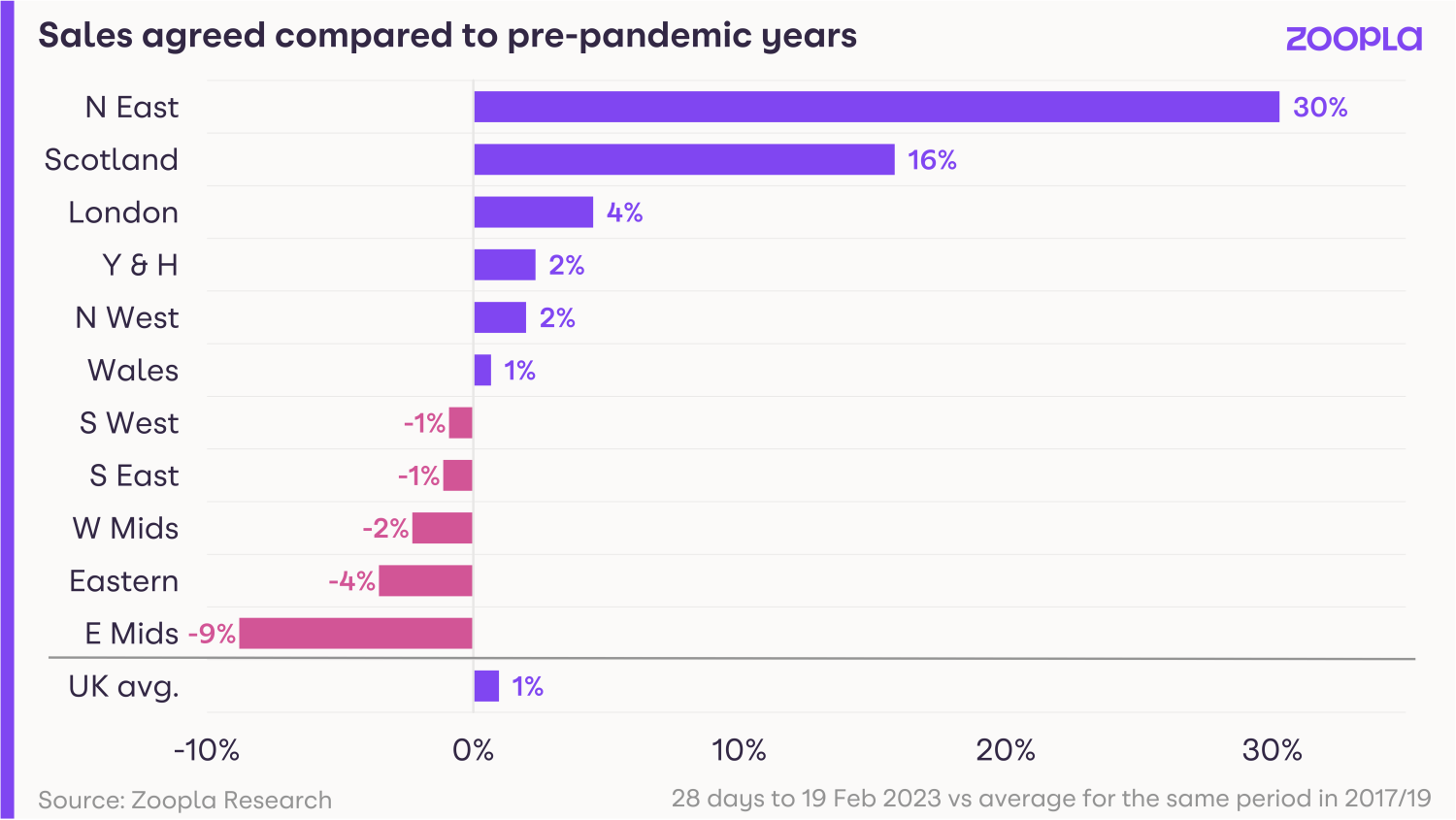
What’s going to happen in the rest of 2023?
Sellers of every property type across the UK will need to be realistic when pricing their homes in order to secure a sale.
However, homes gained so much value in the last two years that it will provide a buffer for those who need to drop their asking price.
Working from home, increased retirement and high immigration will continue to stimulate the demand to move home, while cost-of-living pressures will exacerbate the need for some.
We expect 1.1m homes to sell this year and the market is still on track for a soft landing with modest price falls of up to 5%.
Key takeaways
- Sellers are now having to accept an average 4.5% discount to their asking price to achieve a sale, the highest for 5 years
- The average discount to asking price is £14,100, meaning sellers are having to forgo a third of their pandemic house price gains
- We’re now returning to a buyers’ market where negotiation on asking price is to be expected
Average energy bills set to start to falling later this year
Ofgem has reduced the energy price cap by nearly £1,000, from £4,279 to an average of £3,280 a year, following steep increases in 2022.
The average cost of heating and lighting a home could fall later in the year following a near £1,000 reduction in the energy price cap.
Energy regulator Ofgem has cut the price cap for gas and electricity customers on their providers’ default and variable tariffs from £4,279 to an average of £3,280 a year from 1 April.
But the move, which follows recent falls in wholesale energy prices, will not have an immediate impact on customers’ bills due to the government’s Energy Price Guarantee (EPG).
Under the guarantee, the government stepped in to limit the average household’s combined energy bill to £2,500 until the end of March, rising to £3,000 from 1 April.
As a result, customers will still see an increase in their energy bills of around £500 a year from April.
But the reduction to the energy price cap means the average consumer can expect to have lower energy bills in the months ahead, once the energy price cap falls below the level of the EPG.
Why is this happening?
Ofgem said its cut to the energy price cap, which limits the amount suppliers can charge per unit of energy, was due to a significant reduction in the cost that companies faced in buying and providing energy to customers.
Energy prices have soared following the start of the conflict in Ukraine in February 2022.
The military action led to the UK, EU and US putting restrictions on oil and gas imports from Russia, which had previously accounted for 43% of the EU’s natural gas imports.
The fall in supply coincided with a rise in demand for energy as economic activity resumed following Covid-19 lockdowns, combined with a cold winter in Europe and a hot summer in Asia, where electricity is used to power air conditioning units.
The resulting mismatch between supply and demand pushed gas and electricity prices higher.
Who does it affect?
Unfortunately, the reduction in the energy price cap will not lead to an immediate reduction in gas and electricity bills for consumers.
This is partly because suppliers purchase their energy months in advance, and partly because of the increase to the level of the EPG.
Ofgem CEO Jonathan Brearley said: “Although wholesale prices have fallen, the price cap has not yet fallen below the planned level of the Energy Price Guarantee.
“This means, that on current policy, bills will rise again in April. I know that for many households this news will be deeply concerning.”
But he added that the reduction in the energy price cap reflected a fundamental shift in the cost of wholesale energy for the first time since the gas crisis began, suggesting the pressure seen in the energy market was starting to ease.
“If the reduction in wholesale prices we’re currently seeing continues, the signs are positive that the price cap will fall again in the summer, potentially bringing bills significantly lower.”
What to do if you're worried about your energy bills
If you’re worried about being able to afford your energy bills, or you’re already struggling, make sure you claim any support that’s available to you.
Cost-of-living: help with energy bills
Check that you have claimed any cost-of-living or cold weather payments you are entitled to from the government, as well as the warm home discount from suppliers.
A number of the major energy companies offer grants to help people struggling with their fuel bills. For example, British Gas offers up to £1,500 for individuals and families who are in energy debt, regardless of who their supplier is.
If you’re already facing difficulties, contact your supplier as soon as possible.
Ofgem has rules that they must help you if you’re falling behind. They should work with you to create an affordable payment plan.
You can also take steps to reduce your gas and electricity consumption. Try turning your thermostat down, taking shorter showers, draft-proofing your windows and doors, not using a tumble drier and turning off appliances left on standby mode.
Key takeaways
- The average cost of heating and lighting a home could fall later in the year following a near £1,000 reduction in the energy price cap
- But the move will not have an immediate impact on bills due to the government’s Energy Price Guarantee
- Instead, customers will still see their energy bills increase by around £500 a year from April
The true cost of upgrading an older home to new build energy standards
New research reveals how much it costs to retrofit an older home to match the energy efficiency standards of new-build homes.
The cost of running a home has become one of the most widely discussed topics in recent months, with Google searches for the term ‘energy bill’ increasing by more than 800% in the last year.
So it’s unsurprising that improving the energy efficiency of our homes and reducing bills has become an increasing priority for homeowners and those looking to buy their first property.
Buying a new home vs upgrading an old one
The UK has one of the oldest and most inefficient housing stocks in the world, with nearly three quarters of our homes built before 1980.
Much of the conversation around ways to reduce energy usage has been dominated by quick wins and fast fixes.
This could be using draught excluders, swapping out baths for showers and switching off electrical appliances rather than leaving them on standby.
While these measures can help cut your energy bills, it takes a lot more to bring older homes up to modern energy efficient standards.
It generally requires retrofit works, which can’t be done overnight.
They can be disruptive, costly and time-consuming, so aren’t a reasonable option for everyone.
Our Get on with living report has found that the average three bedroom semi-detached home would cost £61,500 to upgrade to the current standards new builds are built to.
This figure rises to more than £73,000 when including exterior rendering and guttering.
New-build homes have energy efficiency built in, as they’re designed and delivered according to updated and evolving building regulations.
They also use new technologies and materials, and are built with environmentally-conscious practices to support and encourage natural biodiversity.
How much can you save on your energy bills with a new-build home?
As a result of this improved efficiency, new-build homes use significantly less energy than their older counterparts.
So new build homeowners see much lower utility bills, on top of the money saved by not forking out for expensive retrofit works.
Our analysis of government data found 85% of new-build homes were awarded an A or B Energy Performance Certificate (EPC) rating last year.
Meanwhile, only 4% of existing dwellings reached the same energy efficiency standard. The most common energy performance certificate rating in the UK is D.
So what does it all mean for your energy bills?
A new-build home will save you an average of £2,600 on energy bills per year.
And our research shows new-build homeowners will save even more when the government’s Energy Price Guarantee increases on 1 April 2023.
From then, we expect new-build owners to save more than £3,100 per year in England and, due to an older housing stock, £3,300 per year in Wales.
Thinking that saving may be due to new builds being smaller than their older counterparts?
Our Watt a Save report explored this theory and found that new builds use significantly less energy per square metre over the course of a year.
We also found the new-build homes are larger, with an average floorspace of 90.7 square metres compared to existing dwellings at 84.4 square metres.
What do lower energy bills mean for getting a mortgage?
When considering you for a mortgage, banks take your monthly income and outgoings into account.
With new-build buyers seeing monthly savings of £260 on energy bills, they’re likely to be in a better position to afford monthly mortgage payments than those buying older homes.
However, mortgage lenders don’t currently factor in the energy performance of a home when looking at affordability calculations. A national average energy bill is used instead.
At the Home Builders Federation, we’re encouraging lenders and the government to make changes that’ll support and encourage more people to buy energy efficient new builds.
But in the meantime, choosing a new-build home could still open up your buying options.
House developers offer incentives, like contributing to your deposit or energy bills, and low-deposit mortgage schemes to increase your borrowing options.
Plus, the Welsh government has confirmed an extension of the Help to Buy scheme for buyers of new homes with a minimum EPC rating of B.
Given the cost-conscious and time-precious time we’re living in, it’s no surprise that many homebuyers are opting for the benefits of buying a new-build home so they can get on with living.
Key takeaways
- It could cost £70,000 to upgrade the average three bedroom semi-detached home to match the energy efficiency level of new builds
- 85% of new-build homes were awarded an A or B Energy Performance Certificate (EPC) rating last year, compared to only 4% of older homes
- New-build homeowners can expect to save more than £3,100 per year in England after the Energy Price Guarantee rise in April 2023
New-build properties to save homeowners more than £3,000 a year on energy bills
New-build homeowners and renters are expected to save £3,000 on gas and electricity from April, compared with those living in more traditional homes, according to the Home Builders Federation.
People living in new-build houses can expect to pay an average of £3,117.85 a year less for gas and electricity once the government’s Energy Price Guarantee ends on 1 April, compared with those living in older less energy efficient homes.
Even while the Energy Price Guarantee remains in place, those living in new build houses are saving around £2,520.73 in annual bills, while those in flats are saving around £1,140.74, according to research by the Home Builders Federation.
The group, which analysed government Energy Performance Certificate (EPC) data, found that 85% of new build houses and flats have an EPC rating of A or B, the top two ratings available, compared with just 4% of existing dwellings.
The study also found that 53% of homebuyers are now factoring in running costs when purchasing a property.
Neil Jefferson, managing director of the HBF, said: “Energy efficient new homes are saving owners thousands of pounds a year in running costs.
“In the face of mounting pressures on households across the country, the energy performance of a home is an increasing motivator for consumers considering a new home purchase.”
The report reflects our own findings that buyers are becoming more value-conscious due to higher mortgage rates, inflation and the cost-of-living squeeze.
Why is this happening?
The conflict in Ukraine has triggered soaring gas and electricity bills, making people increasingly conscious of the cost of heating their home.
The government’s Energy Price Guarantee has kept bills lower than they would have been, but the guarantee is currently due to end in April.
Meanwhile, housing developers are increasingly incorporating energy efficient designs and materials into their properties, making them cheaper to run than retrofitted older homes.
As a result, the average new build home used just 95 kWh of energy per square metre of area in 2022, compared with an average of 252 95 kWh per square metre for older homes.
HBF calls for 'green mortgages' from lenders
The HBF is calling on lenders to introduce green mortgages that take into account the energy efficient properties of new homes.
It points out that most mortgage calculations are based on the national average energy bill.
The group argues that with 18% of potential buyers saying the main issue preventing them from purchasing a property is uncertainty over whether or not they will be able to secure a mortgage, factoring in the lower energy bills for new homes would help more people get on to the property ladder.
What’s the background?
Recent research by the Royal Institution of Chartered Surveyors found that not only are energy efficient homes cheaper to run, but they are also outperforming other properties in the current housing market.
Six out of 10 estate agents said homes with high energy efficiency ratings were holding their value despite the overall market slowdown.
At the same time, 40% of estate agents said they were seeing more interest from potential buyers in energy efficient homes.
Meanwhile, four out of 10 sellers attached a price premium to their home if it had a high energy efficiency rating.
Key takeaways
- Around 85% of new build houses and flats have an Energy Performance Certificate rating of A or B, compared with just 4% of existing dwellings
- More than half of homebuyers are now factoring running costs into their purchasing decision
- The HBF is calling on lenders to introduce green mortgages that take into account the energy efficient properties of new homes.
Mortgage rates are falling and choice is increasing
More than 4,000 different deals are now available as the mortgage market continues to stabilise.
Mortgage rates are falling and product choice is increasing as the market continues to stabilise.
A total of 4,341 different deals are currently available, up from 3,643 in January, marking the first time product choice has risen above 4,000 since August last year.
The average interest rate charged on both two-year and five-year deals has also fallen for the third month in a row, according to financial information group Moneyfacts.
Mortgage rates fall to below 4% for lower loan-to-value mortgages
The typical cost of a two-year deal is now 5.44%, down from 5.79% in January, while interest on five-year fixed rate mortgages has dropped to 5.20%, from 5.63%.
The latest fall puts the cost of both products back where they were in October 2022, despite the Bank of England Bank Rate rising by 1.75% during the same period.
In further good news, the average amount of time a mortgage is available before it is withdrawn has increased to 28 days, the highest level since March 2022, and up from just 15 days in January.
Why is this happening?
Mortgage lenders withdrew products and hiked their rates in the wake of former Chancellor Kwasi Kwarteng’s mini-Budget in September last year.
The turmoil caused by the mini-Budget led to a steep rise in government borrowing costs, which in turn impacted the rate at which lenders borrow money for fixed rate deals.
As a result, banks and building societies pulled products for repricing, with the number of different mortgages available dropping to just 2,258 at the beginning of October.
But the market has been recovering steadily since Jeremy Hunt took over as Chancellor and reversed nearly all of the measures in the mini-Budget.
As a result, mortgage rates have been on a downward trend, despite the Bank Rate moving in the opposite direction.
What does it mean for me?
Mortgage availability has increased across all deposit levels. The biggest rebound has been for people with a 40% stake in their home, with 606 products now available, the highest level for three years and up from 484 in January.
There is also good news for first-time buyers, with 149 mortgages on the market for people with only a 5% deposit and 539 for those with a 10% one.
Rates are also falling across the board, with the average cost of a five-year fixed rate product for those with 40% to put down back below 5%, while two-year fixed rate deals for people borrowing 95% of their home’s value are averaging 5.99% and five-year ones are 5.53%.
What should I do now?
If you are sitting on your lender’s standard variable rate – the rate you are automatically put on when your existing deal comes to an end – you may want to think about remortgaging.
The average standard variable rate is currently 6.84% - its highest level since October 2008.
Remortgaging from this rate to an average five-year fixed rate deal of 5.2% would save someone with a £200,000 mortgage £200 a month.
Competition among lenders is currently more focused towards five-year fixed rate deals than two-year ones, with the gap between the interest charged on five-year and two-year products standing at 0.24%, the biggest margin for 15 years.
If you have enough flexibility in your budget to cope with future interest rate rises, you may want to consider a tracker mortgage.
Two-year tracker deals currently average 4.39%, although it is important to note that, unlike fixed rate mortgages under which the interest rate stays the same for the product term, tracker mortgages move up and down in line with changes to the Bank Rate.
Key takeaways
- Mortgage rates are falling and product choice is increasing as the market continues to stabilise
- A total of 4,341 different deals are currently available, the first time product choice has risen above 4,000 since August last year
- The average cost of a five-year fixed rate product for those with 40% to put down is now back below 5%


